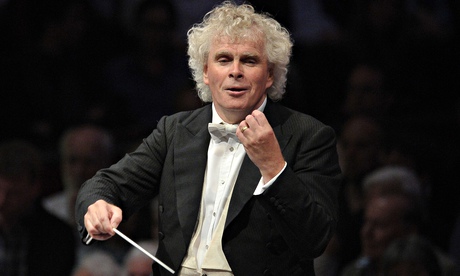‘We’ve never stopped being rebellious,” says Liz Diller, founding partner of Diller Scofidio + Renfro, the New York architects who have just been selected to design London’s new concert hall, the £250m Centre for Music. “But now we are operating in a stealthier way. Rather than trying to kick the establishment walls down, we’re walking in through the front door.”
To reach the hallowed entrance of London’s cultural establishment, they skipped past fellow competitors Norman Foster, Frank Gehry, Renzo Piano and a host of other ageing purveyors of big‑budget arts buildings – an unadventurous shortlist, on which the Americans clearly stood out as the most interesting thinkers of the bunch. This will be their first project in the UK, and the stakes are high for the self-styled provocateurs.
Most famous for their transformation of a redundant Manhattan railway line into the High Line park, which now attracts eight million visitors a year, DS+R are almost accidental architects. They have recently completed a string of major arts buildings, from the faceted coral rock of the Broad Art Museum in Los Angeles, to the silvery cyclopean slug of the Berkeley Art Museum and the Pacific Film Archive, but for the first two decades of their practice they barely built anything at all.
“I never thought I was going to be an architect in the conventional sense,” says Diller, 63, who met her then tutor Ricardo Scofidio, now 82, while studying at the Cooper Union in New York in the 1970s. They started working together on self-initiated installation projects – part of a New York scene that was fizzing with the likes of Trisha Brown and Vito Acconci, Steve Reich and Gordon Matta-Clark – and their sense of mischief soon caught the eyes of curators. They were invited to make something for the project space at the Museum of Modern Art, and took the opportunity to critique the power of the institution, fitting out the room with surveillance cameras and screens to monitor visitors’ behaviour.
Twenty-five years later, having been elevated from rebels to royalty in the interim, they unveiled a $450m masterplan to transform the very same museum, only to be met with furious opposition. Their expansion project was accused by artists and museum-goers of representing the “death knell” of MoMA, seen as the greedy institution selling out to commercial interests and trampling one of its neighbours, the beloved American Folk Art Museum, in the process.
“I think it was a kind of lightning rod for so many anxieties about the power of MoMA,” Diller said in a 2015 interview. “The expansionist mentality. The previous renovations that people may not have been happy with.” The venom seems to have subsided for now: the first phase of the renovation project opened earlier this year to general approval, their surgical interventions seen to be fixing some of the practical flaws of the rambling warren.
DS+R’s shift from fringe radicals to powerful players in New York’s cultural scene hasn’t been an easy one. The High Line has also been subjected to a backlash in recent years, mainly due to its phenomenal success. While the project began as a bottom-up activist initiative, it has been identified as the culprit for the super-gentrification of the surrounding Meatpacking District, spawning a cluster of luxury real-estate towers along its green fringes. It has become the template for countless mayors around the world looking to drive up land values in their cities with a little green garnish.
“The High Line is pushing people out,” says Diller, frankly, speaking from her office nearby. “And it will soon drive us out of the area too.” She is rueful about the consequences, but says she wouldn’t have done anything differently. “There’s no way that anyone could have predicted how successful it was going to be. You don’t want to do unsuccessful projects, but success breeds speculation and development. It’s a weird cycle. You can only jump in there and try and do the best thing at that moment in time.”
As for their concert hall credentials, the architects have proved themselves in the performing arts arena and won plaudits from New York’s concert-going class for their decade-long work on the Lincoln Center. “We strongly felt that it had to be turned inside-out to make good on the ‘publicness’ of its public spaces, to attract new audiences,” says Diller. “Today’s cultural institutions have to do much more than house art or music. They have to play a social and educational role in the community and engage everyone with or without a ticket to a performance.”
It is a theme they are exploring to extremes in their latest project, The Shed, a $500m centre for the performing arts, designed in collaboration with Rockwell Group and currently under construction at the northern end of the High Line. Looking something like a transparent Chanel handbag on wheels, it will house a vast transformable performance space, with a big open piazza able to be covered by the extension of the movable outer shell, clad with an inflatable skin of quilted pneumatic cushions.
“Both The Shed and London’s Centre for Music are 21st-century institutions that force the question, ‘What are artists going to be doing in the next 15 years, 30 years, and beyond?’” says Diller. “The answer is simply, ‘We do not know.’ Our response for The Shed was to make an architecture of infrastructure with enough variable space, loading capacity and electrical power to support any use.”
The main challenge will be to make sure it doesn’t feel like a corporate events hall, given that the space will be regularly rented out for fashion shows, product launches and other commercial bonanzas, to help subsidise the artistic programme. Some have scoffed that it is merely a cultural bauble to decorate Hudson Yards, the biggest private real estate development in US history, and it is unfortunate that the Shed will now be plugged in to the base of a 70-storey tower of luxury apartments, also designed by DS+R.
“It’s our deal with the devil,” says Diller. “It allows us to get an extra 10 storeys of back-of-house space. We never imagined in a million years that we would be doing a commercial tower. But we like to do everything once.”
The architects land in London on equally rocky ground. Many have questioned the need for the project, which is to be shoehorned on to a tricky roundabout site in the City, currently occupied by the Museum of London. The entire argument for the building, which will be home to the London Symphony Orchestra under the leadership of Sir Simon Rattle, rests on the claim that the acoustics of the Barbican and Royal Festival Hall are not good enough, as Rattle has bewailed.
To justify its existence, DS+R’s auditorium will have to sound pitch-perfect to even the most supersonic ears. When UK arts funding is so unbalanced – with a 2014 report finding that Arts Council spending amounted to £68.99 per head of population in London and £4.58 in the rest of England – critics have questioned if this is something the capital really needs. The government withdrew funding last year, so a private fundraising plan is now under way, for which DS+R’s design will have to serve as the crucial bait. Whatever the outcome, with Diller at the helm, it is likely to confound all expectations of what a concert hall might be.











